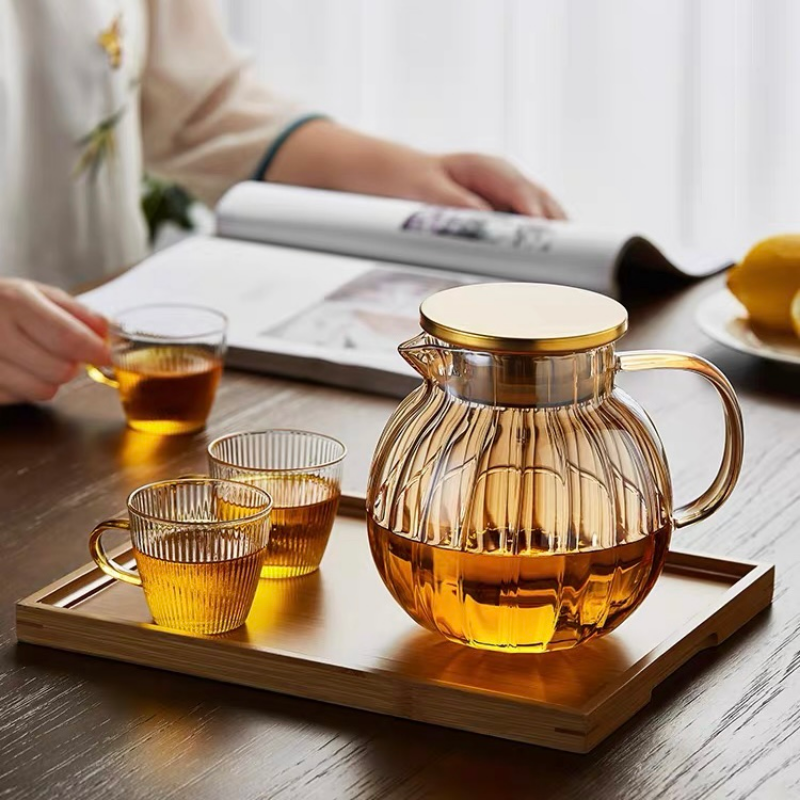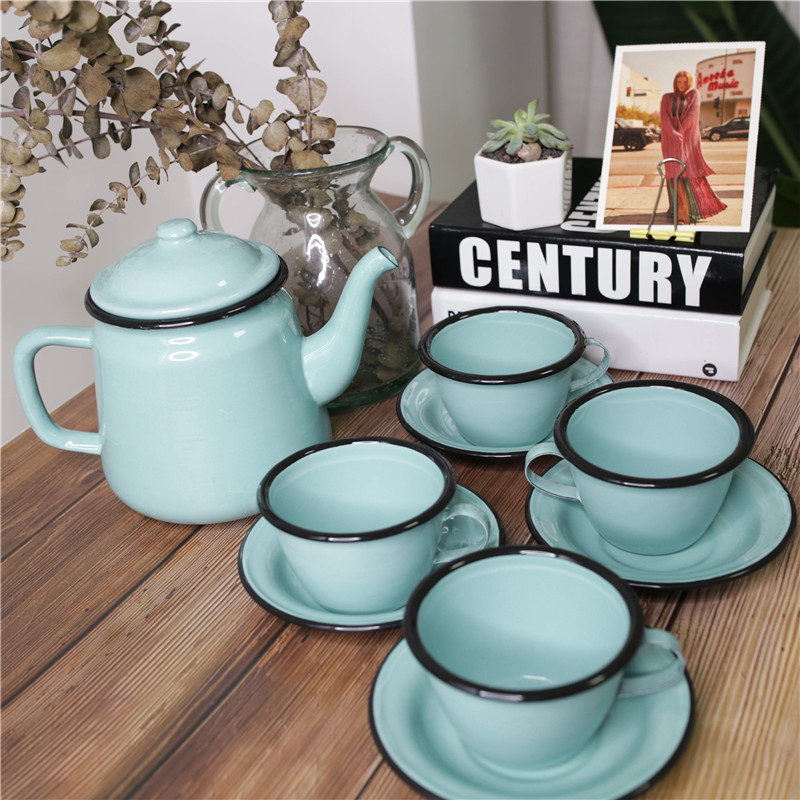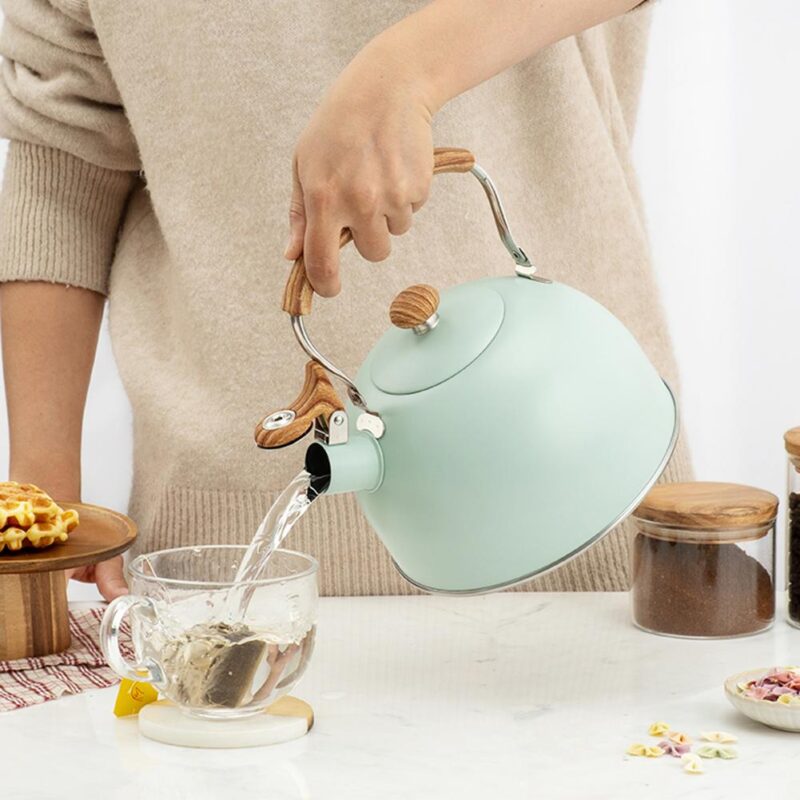Kettle & Pitcher
A Deep Dive into Kettles and Pitchers
The Art of Brewing and Serving: A Deep Dive into Kettles and Pitchers
In the realm of kitchenware, kettles and pitchers represent more than mere utility; they encapsulate the essence of brewing and serving with elegance and precision. This comprehensive blog explores the fascinating world of kettles and pitchers, offering a detailed look at their historical background, the diverse array of styles and materials available, and practical advice on choosing and using these essential household items. Whether you’re looking to enhance your morning tea routine or elevate your home entertaining, this guide will provide all the insights needed to make informed choices and enjoy the best that kettles and pitchers have to offer.
Part I: Historical Insights
1. A Timeless Tradition: The use of kettles dates back several millennia, with evidence suggesting their use in ancient civilizations for boiling water. Originally crafted from metals like copper and iron, kettles have evolved through the ages to include a vast array of styles and functionalities. Pitchers, too, hold a storied place in history, used across various cultures for storing and serving beverages and other liquids.
2. Innovations Through the Ages: The design and functionality of kettles and pitchers have evolved significantly, influenced by technological advancements and changing societal needs. The introduction of the stovetop kettle with a whistle was a significant milestone, while the development of electric kettles in the 20th century revolutionized the speed and convenience of boiling water. Pitchers have transitioned from simple ceramic or metal designs to more sophisticated and decorative pieces, reflecting cultural aesthetics and advancements in material science.
Part II: Exploring Varieties
3. Types of Kettles:
- Stovetop Kettles: Known for their traditional appeal, they require a heat source (like a gas or electric stove) and are celebrated for their durability and classic aesthetic.
- Electric Kettles: These kettles heat water with electrical energy, offering features like automatic shut-off, temperature control, and speed, making them a favorite in modern kitchens.
- Smart Kettles: The latest in kettle technology, these can be programmed and controlled through smart devices, catering to the tech-savvy consumer with a penchant for precision.
4. Types of Pitchers:
- Glass Pitchers: Ideal for displaying the contents within, glass pitchers are perfect for iced beverages and can be found in various shapes and designs.
- Ceramic Pitchers: Often chosen for their decorative qualities, ceramic pitchers are robust and can maintain the temperature of liquids somewhat longer than glass.
- Stainless Steel Pitchers: Durable and rust-resistant, stainless steel pitchers are commonly used in commercial settings but are also gaining popularity in home use for their sleek, modern look.
Part III: Selection and Usage Tips
5. Choosing the Right Kettle:
- Material Matters: Consider the kettle’s material based on your cooking style and health considerations. Stainless steel and glass are popular for their durability and health safety.
- Capacity: Choose a size that matches your typical need to avoid repeated boiling, which is less energy-efficient.
- Features: Look for useful features such as a removable scale filter, water level indicator, and an ergonomic handle.
6. Selecting the Perfect Pitcher:
- Purpose-Driven Design: Decide if the pitcher will be used primarily for serving or decoration. This will guide the material and design choices.
- Ease of Cleaning: Consider how easy the pitcher is to clean, especially if it will be used frequently for drinks like juices or iced tea, which may leave stains or residues.
- Aesthetic Appeal: Choose a design that complements your existing dinnerware and kitchen décor for cohesive home styling.
Part IV: Maintenance and Care
7. Caring for Your Kettles:
- Regular Descaling: Especially important for electric kettles, regular descaling ensures optimal performance and extends the life of the kettle.
- Proper Storage: Empty the kettle after each use to prevent mineral build-up and store it in a dry place.
8. Maintaining Your Pitchers:
- Handling Care: Be mindful when handling materials like glass or ceramic, which are prone to chipping or breaking if dropped.
- Thorough Cleaning: Regular cleaning is crucial, particularly for pitchers used to serve sugary or colored beverages. Some pitchers are dishwasher safe, while others may require hand washing.
Part V: Enhancing Lifestyle with Kettles and Pitchers
9. For the Love of Tea and Coffee: Explore the ritualistic aspects of brewing tea or coffee using specialized kettles, and how the right kettle can enhance the flavor and enjoyment of these beverages.
10. Entertaining Made Elegant: Discover the role of beautifully designed pitchers in home entertaining, from serving homemade cocktails to being the centerpiece at a Sunday brunch.
11. Sustainable Choices: Discuss the importance of choosing eco-friendly materials and designs that contribute to a sustainable lifestyle, emphasizing products that offer longevity and minimal environmental impact.
Conclusion
Kettles and pitchers are foundational to the culinary and social fabric of homes worldwide. Through this guide, we’ve journeyed from their historical roots to their modern-day incarnations, uncovering the breadth of options available and providing practical advice for integrating these essential items into daily life. Whether you’re brewing a morning tea or preparing a pitcher of lemonade for a family gathering, understanding and appreciating the versatility, design, and functionality of kettles and pitchers can significantly enhance these everyday moments. Embrace these timeless kitchen staples, and elevate your home living experience with style, convenience, and a touch of history.



